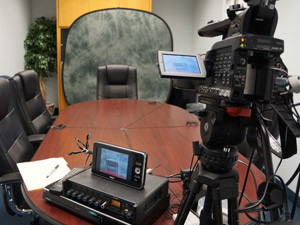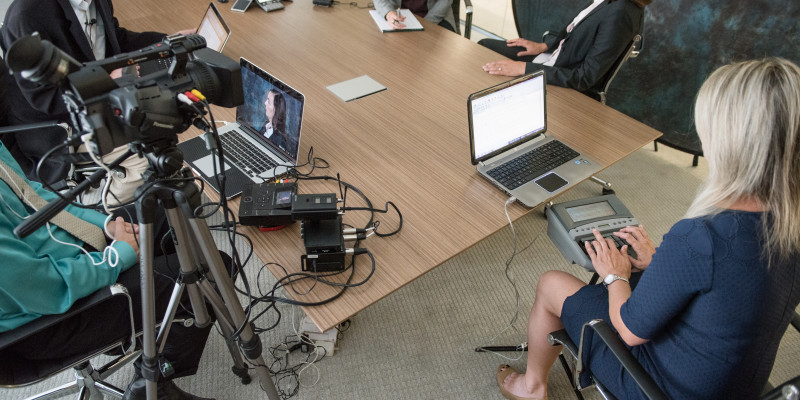Expert-Led Legal Videography for Courtroom Success.
Wiki Article
Why Lawful Videography Is Crucial for Accurate Legal Record-Keeping
In the world of legal proceedings, the precision of record-keeping is extremely important, and legal videography arises as an essential device in this context. As we discover the complex benefits of lawful videography, one need to consider its implications for the future of judicial integrity and transparency.Relevance of Visual Proof
Developing the importance of aesthetic proof in lawful process is paramount for making sure accurate record-keeping and boosting the total stability of the judicial process. Aesthetic proof works as an essential device in documenting occasions, conditions, and other pertinent information that may be necessary to a situation. Unlike created accounts, which are susceptible to interpretation and predisposition, visual recordings provide an objective, unalterable representation of truths as they happened.This form of evidence can record a variety of components, including witness habits, ecological context, and physical proof, every one of which might influence judicial end results. By presenting a clear and detailed visual story, lawful videography gets rid of ambiguity and aids to maintain the credibility of the evidence.
In addition, aesthetic proof can be instrumental in lowering disputes over accurate discrepancies, as it permits a direct comparison against statement and various other documented records. In a period where electronic innovation is increasingly widespread, the capability to existing aesthetic proof effectively can considerably boost the general quality of legal proceedings. Inevitably, the incorporation of visual evidence not just strengthens the documentation process but also reinforces public trust in the judicial system by promoting transparency and accountability.
Enhancing Testament Reputation
The assimilation of lawful videography right into court proceedings considerably improves the trustworthiness of witness testimony. By recording the subtleties of verbal and non-verbal communication, video recordings give a more detailed representation of a witness's demeanor, emotions, and dependability. This visual documentation permits jurors to observe the witness's body movement, face expressions, and overall conduct, which are important elements that can affect their assumption of testimony integrity.
Additionally, the presence of video clip footage can deter witnesses from offering misleading or exaggerated declarations, as they realize that their testimony is being tape-recorded. This accountability enhances the honesty of the judicial process. Ultimately, legal videography acts as an essential tool in making certain that witness testament is not only accurately depicted but likewise watched with heightened integrity by my latest blog post all parties involved.
Comprehensive Document Conservation
Comprehensive document conservation is important for preserving the integrity of legal procedures. Lawful videography offers as an important tool in this process, providing a precise visual and auditory account of statements, depositions, and various other pivotal moments in a situation. Unlike conventional written records, video recordings catch the nuances of body language, tone, and emotion, which are important for recognizing the context and intent behind declarations made during legal proceedings.Including audiovisual elements into record-keeping enhances the conservation of proof, making certain that it stays undamaged and accessible throughout the lawful procedure. This is particularly vital you can try this out in cases where the reliability of witness statements may be challenged, as visual recordings can validate claims and offer clarity. Furthermore, video clip records can be invaluable during charms or retrials, supplying an unchanged depiction of the original testimony.

Moreover, the ability to review video clip evidence permits lawyers to identify critical details that may have been forgotten in created records. By maintaining an extensive archive of lawful procedures via videography, law practice can support the highest requirements of accuracy and liability, eventually contributing to a fairer judicial procedure.
Improving Legal Proceedings
Simplifying lawful procedures is crucial for enhancing effectiveness and reducing hold-ups within the judicial system. Lawful videography functions as a crucial device in attaining this objective by supplying clear and accurate aesthetic paperwork of court hearings, depositions, and testimonies - legal videography. This modern technology permits real-time recording, making sure that all verbal and non-verbal hints are captured, which can promote quicker resolution of conflictsThe combination of videography right into legal processes minimizes dependence on standard approaches, such as prolonged records, which can be taxing to generate and assess. By having accessibility to taped footage, attorneys can promptly reference essential moments, boosting their capacity to prepare and existing situations effectively. This immediacy likewise helps in the clarifying of testaments, decreasing the capacity for misconception.

Admissibility in Court
Accurate documentation is essential not only for effectiveness but also for making sure that evidence is acceptable in court. Lawful videography acts as an important tool in this process, supplying a reliable aesthetic record of testimonies, statements, and events. Courts often need proof to fulfill particular requirements of admissibility, consisting of relevance, authenticity, and reliability. High-quality important site video recordings can satisfy these criteria by recording clear sound and visual information that written transcripts may ignore.To be deemed admissible, lawful videography has to follow established protocols, such as correct equipment use, proper lighting, and clear audio capture. Furthermore, it is important to have certified videographers who comprehend the legal needs surrounding proof collection. legal videography. The chain of protection must additionally be kept to stop any type of insurance claims of meddling or modification
In addition, lawful videography can enhance the persuasiveness of evidence by offering jurors with a direct sight of the testimony, enabling for a much more involved understanding of the situation. In summary, the integration of lawful videography into record-keeping not just sustains efficiency yet additionally strengthens the integrity and admissibility of proof in court process.
Verdict
In final thought, lawful videography plays a pivotal duty in ensuring exact lawful record-keeping by offering objective aesthetic documents. Ultimately, the consolidation of legal videography right into the judicial procedure promotes transparency and bolsters public depend on in the honesty of the legal system.Report this wiki page